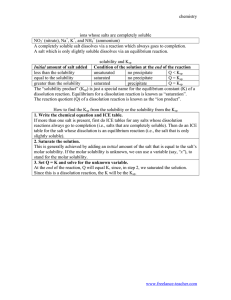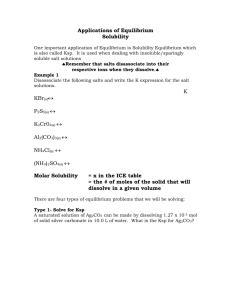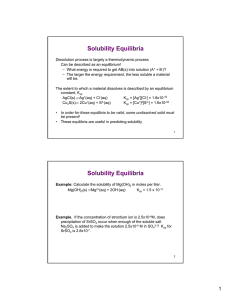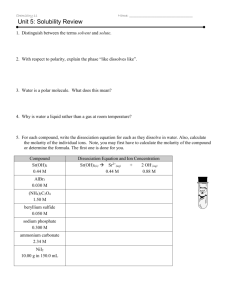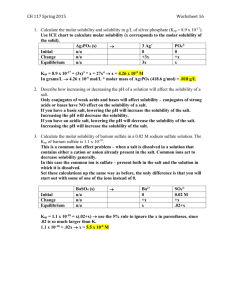Fractional Precipitation & Solubility Chemistry Presentation
advertisement
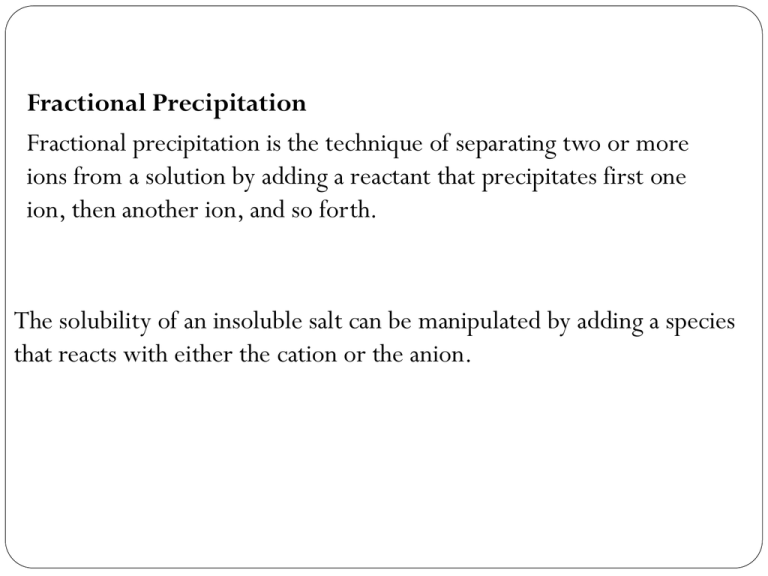
Fractional Precipitation Fractional precipitation is the technique of separating two or more ions from a solution by adding a reactant that precipitates first one ion, then another ion, and so forth. The solubility of an insoluble salt can be manipulated by adding a species that reacts with either the cation or the anion. Effect of pH on Solubility When a salt contains the conjugate base of a weak acid, the pH will affect the solubility of the salt. We will qualitatively explore the situation involving a generic salt, MX, where X is the conjugate base of a weak acid. MX(s) M+(aq) + X-(aq) As the acid concentration increases, X- reacts with the H3O+, forming HX and reducing the X- concentration. As a result, more MX dissolves, increasing the solubility. Consider the two slightly soluble salts barium fluoride and silver bromide. Which of these would have its solubility more affected by the addition of strong acid? Would the solubility of that salt increase or decrease? HF is a weak acid, while HBr is a strong acid. BaF2 is more soluble in an acidic solution. AgBr is unaffected by an acidic solution. Ksp for MgC2O4 is 8.5 × 10-5. Ksp for CaC2O4 is 2.3 × 10-9. MgC2O4 is more soluble. If a dilute acidic solution is added, it will increase the solubility of both salts. MgC2O4 is still more soluble. Complex ion formation equilibria. Ag+(aq) + 2NH3(aq) Ag(NH3)2+(aq) Zn2+(aq) + 4OH-(aq) Zn(OH)42-(aq) Formation constants are shown to the right. Note that all the values are quite large, which means that the equilibrium favors the complex ion. Calculate the molar solubility of AgBr in 1.0 M NH3 at 25°C. We will first combine the two equilibria and find the combined equilibrium constant. Now, we’ll use the combined equilibrium to find the solubility of AgBr in 1.0 M NH3.

